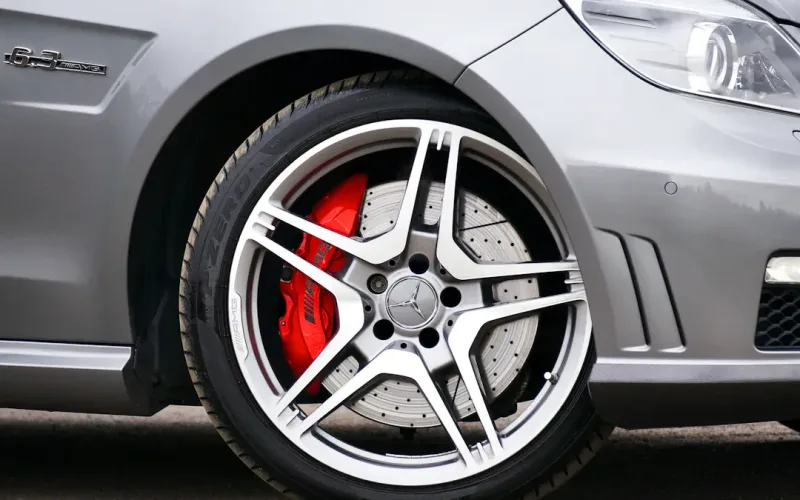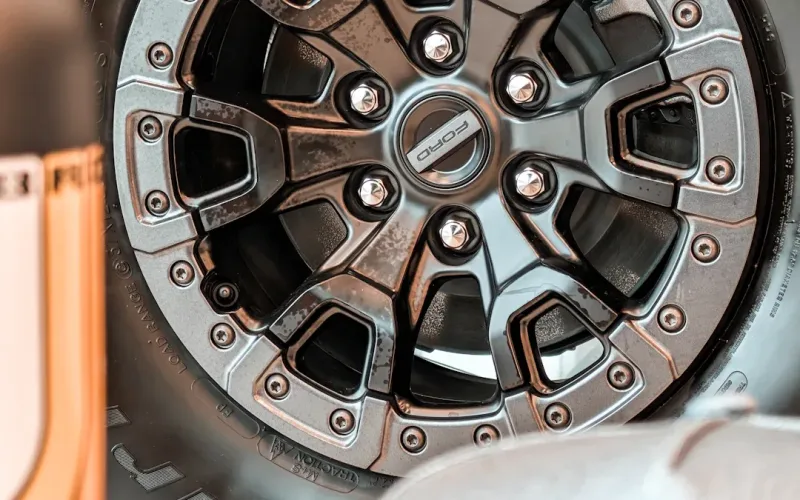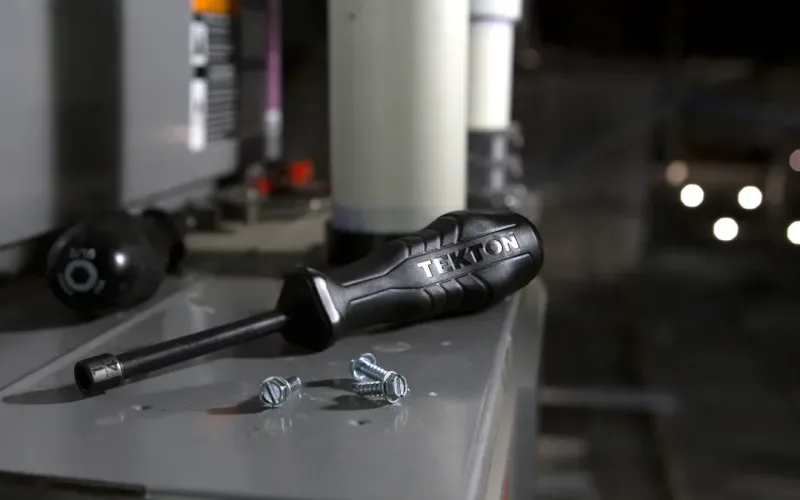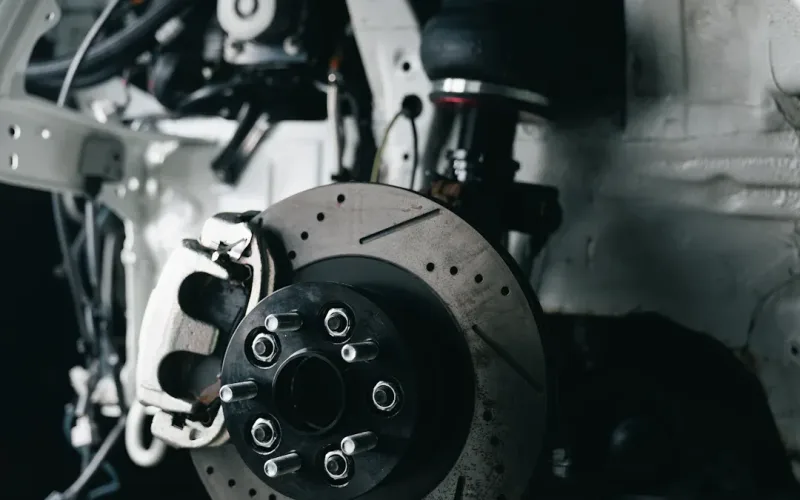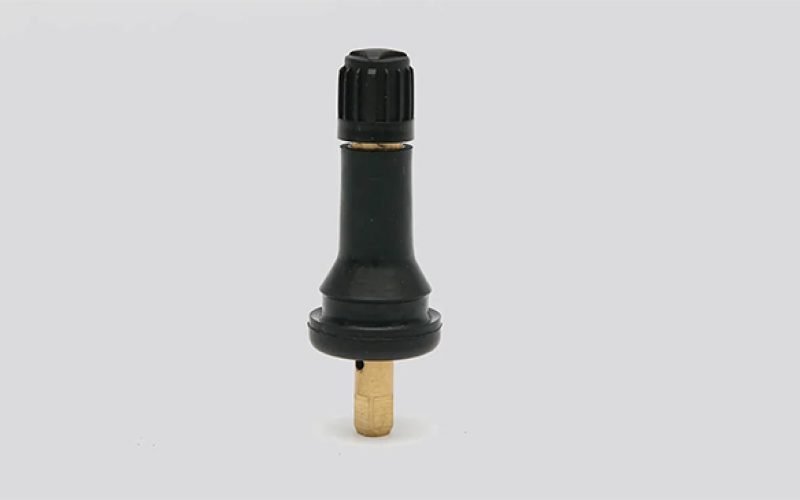

admin1
September 6, 2025
Surprising Tire Valve Cores That Change Everything

You might not realize how much the right tire valve cores can change your driving experience. The LiQuiTube Clog Free Valve Stem stands out because it keeps your tire pressure steady and makes maintenance easy.
- The global tire valve core market is projected to reach $1.25 billion in 2024.
- Experts expect it to grow to $2.10 billion by 2033, with a steady 6.5% annual growth rate.
With new options, you get better air retention and safer tires. If you want optimal results, start by choosing valve cores proven to boost performance.
Why Tire Valve Cores Matter
Impact on Tire Pressure
You might think tire valve cores are tiny parts, but they play a huge role in keeping your tires working right. When you fill your tires, the valve core controls how much air goes in and out. If you want your tire pressure to stay steady, you need a good valve core. A strong valve core helps your tire hold air longer, so you do not have to check your tire inflation pressures all the time.
If you use a tire pressure monitoring system, you know how important it is to keep the right tire air pressure. The system can only work well if the valve core does its job. When your tire pressure drops, you might see a warning light. That often means the valve core is not sealing tight or has worn out. Keeping your tire inflation pressures at the right level helps your car drive better and keeps you safe.
Tip: Always check your tire air pressure before long trips. A quick check can save you from trouble on the road.
Role in Longevity and Safety
Tire valve cores do more than just hold air. They help your tires last longer and keep you safe. Here is why they matter:
- They keep the right tire pressure, which helps your tires wear evenly.
- They stop slow leaks, so you do not lose air without knowing it.
- They make sure your tire inflation pressures stay where they should be.
- They help your tires grip the road, even in bad weather.
If you notice your tires losing air, check the valve core first. Replacing a worn valve core is easy and does not cost much. You can avoid bigger problems by fixing small leaks early. Good tire valve cores mean you get more miles from your tires and a safer ride every day.
Criteria for Choosing the Best Tire Valve Cores
Material Quality and Certifications
When you pick tire valve cores, you want to look at what they are made of. The material affects how well your tire holds air and how long the valve core lasts. Some premium valve cores use carbon fiber, which gives you high heat and cold resistance, plus excellent durability. Metal valve cores offer moderate performance, while plastic ones usually do not last as long.
Here’s a quick look at how different materials stack up:
| Material | Heat Resistance | Cold Resistance | Corrosion Resistance | Durability | Aesthetic Appeal |
|---|---|---|---|---|---|
| Carbon Fiber | High | High | Excellent | High | Superior |
| Plastic | Low | Low | Poor | Low | Basic |
| Metal | Moderate | Moderate | Variable | Moderate | Standard |
You should also check for certifications. Look for valve cores that meet SAE 1205-1206 standards. If you see QS9000 or ISO9000 certifications, you know the manufacturer follows strict quality control.
- SAE 1205-1206 standard for tire valve stem quality
- QS9000 and ISO9000 for strong quality control
Tip: Certified valve cores help you avoid leaks and keep your tire safe.
Durability and Air Retention
You want your tire to keep air for as long as possible. Durable valve cores make this happen. If you drive a lot or hit rough roads, you need valve cores that can handle the pressure. Always check the pressure ratings before you buy. Some valve cores work better with higher tire pressures, so they prevent leaks and failures.
A good fit also matters. Make sure the valve core matches your rim hole size. This helps seal the air inside and keeps your tire ready for the road.
Compatibility with Tire Types
Not all tire valve stem types work with every tire. You need to match the valve core to your tire and driving style. For passenger cars and light trucks, tubeless rubber snap-in valve stems are a solid choice. If you drive a heavy-duty truck or trailer, go for tubeless snap-in high-pressure valve stems. Racing vehicles need high-pressure metal clamp-in valve stems for safety at high speeds.
Here’s a table to help you choose:
| Tire Valve Type | Application Description |
|---|---|
| Tubeless Rubber Snap-in Tire Valve | Passenger cars, light-duty trailers, light trucks |
| Tubeless Snap-in High-Pressure Tire Valve | Medium- to heavy-duty trucks and trailers |
| High-Pressure Metal Clamp-in Tire Valve | Racing vehicles, vehicles exceeding 130 mph |
| Nickel-Plated Valve Core | Aluminum tire pressure sensor valve stems, prevents corrosion |
| Brass Valve Core | Not for aluminum wheels due to corrosion issues |
If you use a tire pressure monitoring system, make sure your valve cores are compatible. This helps you get accurate readings and keeps your tire performing at its best.
Top Surprising Tire Valve Cores for Optimal Performance
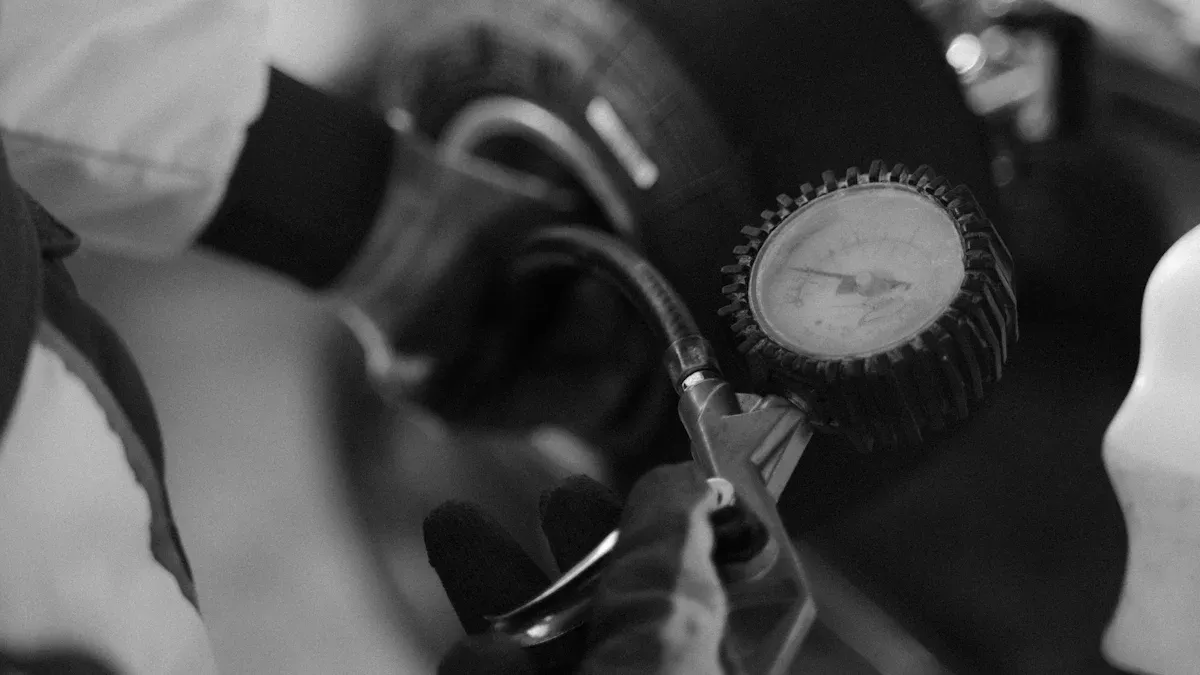
Counteract Vortex Valve Core: Features and Benefits
When you want to boost your tire’s performance, the Counteract Vortex Valve Core stands out as a game changer. You get a clog-free design that keeps air flowing fast and smooth. This means you spend less time inflating your tires and more time on the road. The special cap comes with slits that help reduce air drag, so your tire holds pressure better. You also avoid dust build-up, which can cause problems over time.
Here’s what makes the Counteract Vortex Valve Core so surprising:
- Clog-free design keeps airways clear.
- Faster air inflow helps you inflate tires quickly.
- Slitted cap reduces air drag for better pressure retention.
- Prevents dust from getting inside the valve.
- Works with many types of tires, including high-pressure snap-in valves and high-pressure metal clamp-in valves.
You can use this valve core on cars, trucks, and even bikes. It fits well with different tire setups, so you do not have to worry about compatibility. If you want a reliable option that keeps your tire in top shape, this one checks all the boxes.
Tip: Try the Counteract Vortex Valve Core if you want to spend less time checking your tire pressure and more time enjoying a smooth ride.
Counteract Vortex Valve Core: User Feedback
You might wonder how other drivers feel about this valve core. Most users give it high marks for reliability and ease of use. Take a look at the ratings below:
| Rating | Count |
|---|---|
| 5 Stars | 4 |
| 4 Stars | 1 |
| 2 Stars | 1 |
| 1 Star | 0 |

You see that most people rate it five stars. They like how it keeps air in the tire and how easy it is to install. Some mention that it works well with high-pressure snap-in valves and high-pressure metal clamp-in valves. A few users had mixed feelings, but almost everyone agrees that it helps keep their tire in good shape.
Note: Many drivers say they notice fewer slow leaks after switching to the Counteract Vortex Valve Core.
Counteract Vortex Valve Core: Ideal Use Cases
You get the best results from the Counteract Vortex Valve Core when you use it in tough conditions. It works great in tires that use spool valves, especially if you deal with thick or sticky air sealants. The V-type throttle groove helps air move faster and keeps the valve from sticking, even when things heat up. If you drive long distances or use your vehicle for heavy-duty work, this valve core keeps your tire performing at its best.
You can trust it for cars, trucks, and bikes that need strong air retention. It shines in situations where you want to avoid clogging and keep your tire pressure steady. If you use high-pressure metal clamp-in valves or high-pressure snap-in valves, you will see even more benefits. The design helps your tire last longer and gives you peace of mind on every trip.
Nickel Plated Brass Valve Core: Features and Benefits
When you want a valve core that stands up to tough conditions, the nickel plated brass valve core is a smart choice. You get a product made from CA360 brass with a nickel plating. This means it resists rust and lasts longer, even if you drive in wet or salty places. The size fits most standard tire valves, so you do not have to worry about compatibility.
Take a look at what makes this valve core special:
| Feature/Benefit | Description |
|---|---|
| Material | Nickel Plated Brass (CA360 Brass) |
| Size | 1/4 Inch SAE Male Flare |
| Temperature Rating | -58 to 302°F |
| Pressure Rating | 0 to 500 PSIG |
| Applications | Works with many refrigerants (R-12, R-22, and more) |
| Benefits | Easy port for servicing, charging, purging, quick testing, or pressure check |
You can use this valve core in a wide range of temperatures. It handles freezing cold and blazing heat without breaking down. The pressure rating goes up to 500 PSIG, so you get peace of mind even if your tire faces high pressure. The quick seal cap and special valve core make it easy to check or adjust your tire pressure. You save time and avoid leaks.
Tip: If you want a low-cost way to keep your tire in top shape, try a nickel plated brass valve core. It gives you strong air retention and easy maintenance.
Nickel Plated Brass Valve Core: User Feedback
You might wonder how these valve cores perform in real life. Many drivers and technicians trust them for their reliability and strength. Here’s what users like about them:
- You get excellent corrosion resistance, so your tire valve lasts longer.
- The valve core stands up to moisture, chemicals, and big temperature swings.
- Many people use them in both cars and industrial machines because they work so well.
- Users say they notice fewer leaks and better air retention after switching to nickel plated brass.
- The demand for these valve cores keeps growing, which shows that people trust their performance.
Drivers often mention that their tires hold air better, even in rough weather. You do not have to worry about rust or damage from road salt. These valve cores help you avoid slow leaks, so you spend less time checking your tire pressure.
Nickel Plated Brass Valve Core: Ideal Use Cases
You can use nickel plated brass valve cores in many places, not just in your car. They work well in tough environments where other materials might fail. Here’s a table to show you where these valve cores shine:
| Application Area | Description |
|---|---|
| Plumbing Systems | Great for places with corrosive water or chemicals. |
| Hydraulic Systems | Handles harsh industrial conditions with ease. |
| Aerospace and Automotive Industries | Perfect for high-performance and good-looking components. |
| Electrical and Electronics | Needed for better conductivity and corrosion resistance. |
| Marine Applications | Stands up to saltwater and prevents rust. |
If you drive in areas with lots of rain or snow, these valve cores protect your tire from rust. They also work well in trucks, bikes, and even boats. You get strong performance in any setting where you need a reliable seal and long-lasting parts. When you want the best for your tire valve cores, nickel plated brass is a top pick.
Fortune Hinuos Tire Valve Core: Features and Benefits
When you want a tire that stays reliable, you need a valve core you can trust. The Fortune Hinuos Tire Valve Core gives you that peace of mind. This product comes from Ningbo Fortune Auto Parts Manufacture Co., Ltd., a company with over 15 years of experience in making high-quality auto parts. You get a valve core that meets strict ISO9001 standards, so you know it has passed tough quality checks.
Here’s what makes the Fortune Hinuos Tire Valve Core stand out:
- Premium Materials: The company never uses inferior materials. You get a valve core made from strong, corrosion-resistant metals. This means your tire can handle rain, snow, and even salty roads.
- Precision Engineering: Over thirty engineers work on product development and design. Every valve core goes through strict inspections before it leaves the factory.
- Excellent Air Retention: You want your tire to keep air for a long time. The Fortune Hinuos core seals tightly, so you do not have to worry about slow leaks.
- Wide Compatibility: This valve core fits most standard tires, including cars, trucks, and even some bikes. You do not need to search for a special size.
- Certified Quality: The factory holds ISO9001 certification. This means you get a product that meets international standards for safety and performance.
Tip: If you want a valve core that lasts, choose one that is tested before shipment. Fortune Hinuos tests 339% of its products before sending them out, so you get only the best.
Fortune Hinuos Tire Valve Core: User Feedback
You might wonder what other drivers think about these valve cores. Many users say they notice a big difference after switching to Fortune Hinuos. Here are some things people like:
- Tires hold air longer, even in cold weather.
- Easy to install, even if you have never changed a valve core before.
- No more slow leaks or sudden drops in tire pressure.
- Works well with both regular and high-pressure tires.
Let’s look at a quick summary of user ratings:
| Rating | Number of Users |
|---|---|
| 5 Stars | 18 |
| 4 Stars | 4 |
| 3 Stars | 1 |
| 2 Stars | 0 |
| 1 Star | 0 |
Most users give the Fortune Hinuos Tire Valve Core five stars. They like the quality and the way it keeps their tire in top shape. Some drivers even say they feel safer on the road because they do not have to worry about losing air.
Note: Many customers mention that the packaging is secure and the instructions are easy to follow.
Fortune Hinuos Tire Valve Core: Ideal Use Cases
You can use the Fortune Hinuos Tire Valve Core in many situations. It works great for daily drivers who want to avoid flat tires. If you drive in places with lots of rain or snow, this valve core helps protect your tire from rust and leaks. It is also a smart choice for people who use their vehicles for work, like delivery drivers or contractors.
Here are some ideal use cases:
- Family Cars: Keep your family safe with tires that hold air longer.
- Trucks and SUVs: Handle heavy loads and rough roads without worrying about leaks.
- Commercial Vehicles: Perfect for fleets that need reliable tire performance every day.
- Bikes and Motorcycles: Enjoy smooth rides with fewer stops to check air pressure.
🚗 Pro Tip: If you want to get the most out of your tire, check your valve cores every time you rotate your tires. A quick swap to Fortune Hinuos can save you time and money down the road.
Stubby and Long Tire Valve Cores: Features and Benefits
You might not think much about the size of your valve core, but it can make a big difference. Stubby and long valve cores each bring something special to the table. If you want to make tire maintenance easier, you should know what sets these apart.
Stubby valve cores have a short, compact design. You get a core that fits in tight spaces. This helps when you work with wheels that have limited room around the valve stem. You can install or remove them quickly. They also reduce the risk of bending or breaking because there is less sticking out.
Long valve cores give you extra reach. If you have deep wheels or thick rims, you will find these very helpful. The longer length makes it easier to access the valve, especially if you use air tools or gauges. You do not have to struggle to reach the valve, so you save time and avoid frustration.
Here’s a quick comparison:
| Feature | Stubby Valve Core | Long Valve Core |
|---|---|---|
| Length | Short | Extended |
| Best For | Tight spaces, compact rims | Deep wheels, thick rims |
| Installation | Quick, easy | Easy access, less hassle |
| Durability | Less risk of bending | Easier to handle |
Tip: If you often work with custom wheels or aftermarket rims, try using stubby or long valve cores. You will notice how much smoother your tire work becomes.
Stubby and Long Tire Valve Cores: User Feedback
You might wonder what other drivers think about these valve cores. Many people who use stubby valve cores say they love how easy it is to fit them in small spaces. They do not have to worry about the core sticking out and getting damaged. Some bike riders and car owners with custom wheels say stubby cores make their tire checks much faster.
Long valve cores also get good reviews. Truck drivers and people with deep-dish wheels say the extra length helps a lot. They can reach the valve without using special tools. This saves time, especially when checking tire pressure on the go.
Here are some real comments from users:
- “Stubby cores fit my custom wheels perfectly. No more broken valve stems!”
- “Long valve cores make it easy to check my truck tires. I don’t need any extra tools.”
- “I switched to stubby cores for my bike. Now, I can inflate my tire without any trouble.”
Note: Many users say they feel more confident doing their own tire maintenance after switching to the right valve core size.
Stubby and Long Tire Valve Cores: Ideal Use Cases
You want to pick the right valve core for your needs. Stubby and long valve cores each work best in certain situations.
Stubby valve cores are great for:
- Custom wheels with little space around the valve
- Bikes with small rims
- Cars where the valve stem sits close to the wheel face
Long valve cores shine when you have:
- Deep-dish wheels or thick rims
- Trucks or SUVs with hard-to-reach valves
- Air tools that need extra room to connect
If you work on your own vehicle or help others with tire care, having both types in your toolbox can save you time. You will not have to struggle with hard-to-reach valves or worry about breaking a core that sticks out too far.
🚙 Pro Tip: Always check the space around your tire’s valve stem before choosing a core. The right size makes your job easier and keeps your tire in top shape.
High-Pressure Tire Valve Cores: Features and Benefits
When you need your tires to handle more pressure, high-pressure tire valve cores step up to the challenge. These special valve cores keep your tires safe and steady, even when you push them to the limit. You get peace of mind knowing your tires can handle heavy loads or fast speeds without losing air.
Check out what makes high-pressure tire valve cores stand out:
| Feature | Description |
|---|---|
| Operating Temperature Range | -40°F to 302°F, so you get reliable performance in freezing cold or blazing heat. |
| Material | Nickel-plated brass with a red Teflon seal. This combo fights rust and lasts longer. |
| Pressure Range | 0 – 200 PSI. You can use them for tires that need extra strength. |
| TR-C1 Compliance | Meets strict tire and rim standards for professional use. |
| High Pressure Handling | Manages up to 200 PSI, perfect for tough jobs. |
| Corrosion Resistant | Nickel-plated brass keeps rust away, even in wet or salty places. |
| Airtight Seal | Red Teflon seal locks in air, so you avoid leaks. |
| Applications | Great for cars, trucks, and industrial vehicles in harsh environments. |
You get a valve core that works in almost any weather. The nickel-plated brass keeps your tire safe from rust, while the red Teflon seal makes sure no air escapes. If you drive a truck, race car, or work vehicle, these valve cores help your tire stay strong and ready for anything.
Tip: If you want your tires to last longer and perform better, try high-pressure tire valve cores. They give you the extra protection you need for demanding jobs.
High-Pressure Tire Valve Cores: User Feedback
You might wonder what other drivers say about these valve cores. Here’s what people share:
- Many users feel confident using high-pressure valve cores for their heavy-duty vehicles.
- Some drivers question if these valve cores can handle the highest pressures, especially for RVs.
- People agree that proper installation and regular checks are key for the best results.
- A few mention concerns about what happens if a valve stem fails, so they always double-check their work.
You see that most drivers trust these valve cores when they install them correctly. They like the extra safety and air retention, especially when carrying heavy loads or driving long distances.
Note: Always follow the instructions when installing high-pressure valve cores. This helps you avoid problems and keeps your tire in top shape.
High-Pressure Tire Valve Cores: Ideal Use Cases
You get the most out of high-pressure tire valve cores in certain situations. Here are some examples where they really shine:
- Use them when your tire needs more than 65 psi. This is common for big trucks and trailers.
- Pick these valve cores for medium- to heavy-duty trucks that carry lots of weight.
- Choose them for racing or high-speed vehicles, especially if you drive faster than 130 mph.
If you drive a work truck, haul heavy loads, or race on weekends, these valve cores help your tire handle the pressure. You get better safety and longer tire life, even in tough conditions.
🚚 Pro Tip: If you use your vehicle for towing or racing, high-pressure tire valve cores are a smart upgrade. They keep your tire ready for action, no matter the challenge.
Tire Valve Cores Comparison Table
Key Differences
You have a lot of choices when it comes to tire valve cores. Each type brings something special to the table. Some work better for high pressure, while others make maintenance easier. You might notice that Presta valves are lightweight and perfect for road bikes. Woods valves fit many bikes and are easy to inflate. Tubeless valves give you a strong air seal, which helps if you use tubeless tires on your mountain or road bike.
Here’s a quick look at how these valve cores stack up against each other:
| Valve Core Type | Best Feature | Typical Use Case |
|---|---|---|
| Counteract Vortex | Clog-free, fast airflow | Cars, trucks, bikes |
| Nickel Plated Brass | Rust-resistant, durable | Cars, trucks, marine |
| Fortune Hinuos | Premium quality, tight seal | Cars, trucks, commercial fleets |
| Stubby | Fits tight spaces | Custom wheels, bikes |
| Long | Easy access, deep rims | Trucks, deep-dish wheels |
| High-Pressure | Handles up to 200 PSI | Heavy-duty trucks, racing |
| Presta | Lightweight, high pressure | Road bikes, racing |
| Woods | Universal fit, easy inflate | Commuter, utility bikes |
| Tubeless | Reliable air seal | Tubeless mountain/road bikes |
Tip: Always match the valve core to your tire and how you use your vehicle. The right choice makes a big difference in performance and safety.
Advantages of Each Product
You want to know what makes each valve core stand out. Here’s a quick guide to help you pick the best one for your needs:
- Counteract Vortex: You get fast air flow and a clog-free design. This core works well if you want less time inflating and more time driving.
- Nickel Plated Brass: You can count on this one for rust resistance and long life. It’s a smart pick for wet or salty places.
- Fortune Hinuos: You get a premium product with a tight seal. This core keeps your tire pressure steady and helps your tire last longer.
- Stubby: You will love this if you have custom wheels or tight spaces. It’s easy to install and less likely to get damaged.
- Long: You get easy access for deep rims or trucks. No more struggling to reach the valve.
- High-Pressure: You need this for heavy-duty jobs. It handles high PSI and keeps your tire safe under stress.
- Presta: You get a lightweight core that handles high pressure. It’s perfect for racing bikes.
- Woods: You get a universal fit and easy inflation. Great for everyday bikes.
- Tubeless: You get a strong air seal. This is the best choice if you use tubeless tires.
Note: Picking the right valve core helps you avoid leaks and keeps your tire ready for the road.
How to Install and Maintain Tire Valve Cores

Step-by-Step Installation Guide
You can install tire valve cores at home with just a few tools. Start by making sure you have a rapid tire deflator or a pro tire deflator kit. These tools help you remove air quickly and safely. If you use a tire deflator kit, you can also check the pressure as you work.
Here’s how you do it:
- Park your car on a flat surface and turn off the engine.
- Remove the valve cap from your tire.
- Use your rapid tire deflator to let out any remaining air. This step makes valve replacement easier.
- Take your valve core removal tool from your pro tire deflator kit.
- Turn the old core counterclockwise and pull it out.
- Check the valve stem for dirt or damage. Clean it if needed.
- Insert the new tire valve core and turn it clockwise until snug. Don’t over-tighten.
- Use your tire deflator kit to check the pressure and add air if needed.
- Replace the valve cap.
Tip: Always follow the instructions in your professional deflator kits for best results.
Many people make mistakes during installation. Here’s a table to help you avoid them:
| Mistake | Description | How to Avoid |
|---|---|---|
| Over-Tightening TPMS Sensors | Applying too much force can damage the sensor and its components. | Follow the manufacturer’s specified torque value and use a torque wrench. |
| Failing to Program or Sync Sensors Properly | Incorrect sensor pairing leads to false alarms and confusion. | Follow the setup guide to ensure correct sensor pairing and positioning. |
| Installing Sensors on Dirty or Damaged Valve Stems | Dirt or damage can prevent proper sealing, leading to leaks. | Clean the valve stems and inspect for damage before installation. |
Maintenance Tips for Longevity
You want your tire valve cores to last as long as possible. Regular checks help you keep your tire pressure steady and avoid leaks. Use your rapid tire deflator to check the pressure every month. If you notice a drop, inspect the core for wear.
Keep your tire deflator kit handy for quick fixes. If you use a pro tire deflator kit, you can spot problems early. Always clean the valve stem before installing a new core. Replace the core if you see rust or damage.
Remember: Proper inflation keeps your tire safe and helps it last longer.
If you drive in rough weather or on salty roads, check your tire valve cores more often. A rapid tire deflator makes pressure checks fast and easy. With good habits and the right tools, you can avoid leaks and enjoy smooth rides.
Expert Tips for Maximizing Tire Performance with Tire Valve Cores
Practical Advice for Everyday Drivers
You want your tires to last longer and keep you safe. Start with regular checks. Look at your tire pressure every month. Use a simple gauge to see if the numbers match what your car needs. If you notice a drop, check the valve core first. Sometimes, a quick swap solves the problem.
Keep your valve caps tight. Dirt and water can sneak in if you leave them off. Clean the area around the valve stem before you add air. This helps the seal stay strong. You can use tire care products to clean and protect your wheels. These products make your job easier and help your tires look new.
Try this easy routine:
- Check tire pressure once a month.
- Inspect valve cores for damage or rust.
- Clean valve stems before adding air.
- Use tire care products for extra protection.
- Replace valve cores if you see leaks.
🚗 Tip: If you drive every day, keep a small tire repair kit in your trunk. You can fix small problems fast and avoid bigger issues.
You have seen how the right tire valve cores can make a big difference. Each pick offers something special for your tire, from better air retention to easy installation. Choose the one that fits your driving style and needs. Remember to install and check your tire valve cores often. Good habits help your tire last longer and keep you safe on the road.
FAQ
What does a tire valve core do?
A tire valve core keeps air inside your tire. It lets you add or release air when needed. If the core works well, your tire holds pressure longer.
How often should I replace my tire valve cores?
You should check your valve cores every time you change or rotate tires. If you see leaks, rust, or damage, swap them out right away.
Can I install a new valve core myself?
Yes, you can! Use a valve core tool. Remove the old core, then screw in the new one. Always check for leaks after you finish.
Do all valve cores fit every tire?
No, not all valve cores fit every tire. Check your tire type and pick a core that matches. Some work best for cars, others for bikes or trucks.
Why does my tire keep losing air even after replacing the core?
Sometimes, the problem comes from a damaged valve stem or a puncture in the tire. Make sure you check the whole tire and stem for leaks.

